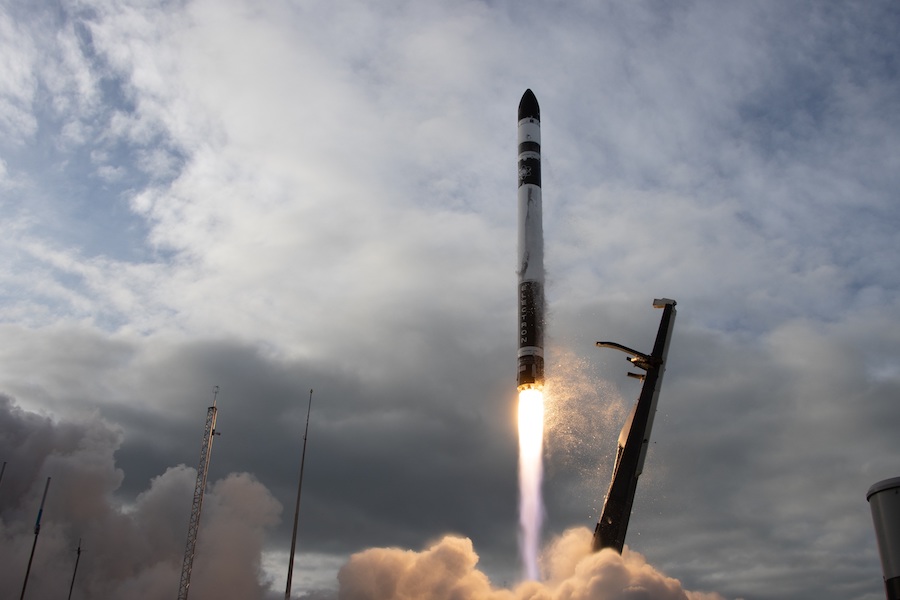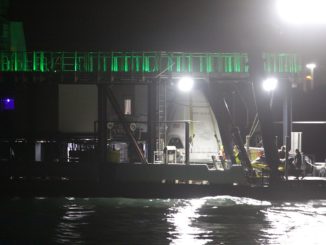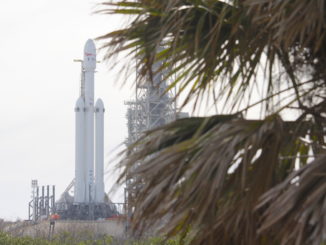
A detached electrical connector on the second stage of Rocket Lab’s Electron rocket caused a failure on a July 4 mission that destroyed seven small commercial satellites, but the company said Friday it is on track to resume launching before the end of August.
Once the electrical system disconnected in flight, it cut power from the rocket’s battery to the electric turbopumps on the Electron’s second stage Rutherford engine. That caused the engine to switch off prematurely around five-and-a-half minutes after the rocket took off from Rocket Lab’s launch base in New Zealand.
The early engine shutdown prevented the rocket from reaching the velocity necessary to enter a stable orbit around Earth, according to Peter Beck, founder and CEO of Rocket Lab, a small satellite launch company headquartered in Long Beach, California.
But telemetry continued streaming from the launch vehicle back to Rocket Lab’s control center in Auckland, New Zealand, allowing engineers to analyze data and determine the cause of the failure. The kerosene-fueled second stage engine shut down in a controlled manner, and the rocket coasted to an altitude of around 121 miles (195 kilometers) before re-entering the atmosphere and burning up.
The seven satellites lost in the launch failure were owned by Canon, Planet and a British startup company named In-Space Missions.
Improved testing should be able to catch defects in the type of electrical connector that led to the July 4 failure, and engineers believe no design changes will be required on the Electron rocket before future flights, Beck said.
Before this month’s accident, the Electron rocket had amassed a flawless success record since entering commercial service in 2018.
“This is the launch industry, and unfortunately these things do happen,” Beck said Friday in a conference call with reporters. “I think Electron has somewhat earned its stripes with the fact that we’ve put 53 customer payloads into orbit without fail.”
The failed launch July 4 was the 13th flight of an Electron rocket, and marked the second time an Electron failed to reach orbit, following a problem on the first Electron test flight in 2017. No customer payloads were aboard the inaugural test flight.
Working under the oversight of the Federal Aviation Administration, which regulates U.S. launch companies, Rocket Lab engineers traced the cause of the July 4 launch failure to a problem with an electrical connector on the vehicle’s second stage.
The faulty connector evaded Rocket Lab’s pre-flight testing procedures.
“Basically, you could define it as really a thermal fault,” Beck said. “So while all of that testing showed no issues, after a period of time, one of the joints had a higher resistance, and that higher resistance led to heating.
“That heating then led to thermal expansion of one of the components,” he said. “That thermal expansion and heating allowed some of the potting compounds around that joint — (intended) to keep it secure from vibration — to flow.”
Beck said the problem was a “very, very sneaky and tricky issue to screen for” during testing. Engineers did not uncover the faulty electrical connector before the July 4 mission because it remained secure during Rocket Lab’s standard pre-launch vibration and thermal vacuum testing.
“However, the issue is well understood by the team,” Beck said. “We have 600 people working at Rocket Lab, and this is everybody’s No. 1 priority.”
In a press release Friday, Rocket Lab said engineers seeking the root cause of the failure reviewed more than 25,000 channels of data from the Electron launch vehicle, and performed extensive testing on the ground.
“It reminds everybody just how incredibly hard this is, and spaceflight has no tolerance for any error whatsoever,” Beck said.
Here’s the moment the video feed from Rocket Lab’s Electron launch vehicle ended & live telemetry appeared to show the rocket stopped accelerating.
The data feed showed the rocket reached a peak altitude of 194.8 kilometers before falling back to Earth.https://t.co/GMLbgXLtm5 pic.twitter.com/mCydc8XJzI
— Spaceflight Now (@SpaceflightNow) July 4, 2020
Rocket Lab said its team “was able to confidently narrow the issue down to a single anomalous electrical connection.”
“This connection was intermittently secure through flight, creating increasing resistance that caused heating and thermal expansion in the electrical component,” Rocket Lab said. “This caused the surrounding potting compounds to liquify, leading to the disconnection of the electrical system and subsequent engine shutdown.”
“The liquefaction of this potting compound is a result of the additional heat caused by the resistance,” Beck explained. “When those potting compounds are able to flow, it doesn’t create great electrical connections.”
Beck said Rocket Lab has produced 728 similar electrical connectors to date — with numerous connectors on each rocket — and none exhibited the problem that led to the July 4 failure.
“We know the electrical connection was improper, but we have incredibly diligent teams who build these battery packs, and build a tremendous number of them,” Beck said. “It’s hard to say if it was necessarily a manufacturing defect, or just an anomalous connection.”
Beck said Friday that engineers were able to replicate the problem in testing, and they know now what to look for to root out the problem in hardware slated for future Electron flights.
The FAA, which licenses commercial satellite launches by U.S. companies, has cleared Rocket Lab to resume flights, according to Beck.
The company aims to launch its next Electron rocket before the end of August from its privately-operated spaceport on New Zealand’s North Island. That could be followed in September by Rocket Lab’s first launch from a new pad at the Mid-Atlantic Regional Spaceport on Wallops Island in Virginia.
Rocket Lab did not announce what payload will fly on its next mission from New Zealand. Before the July 4 failure, a small radar surveillance satellite from Capella Space was assigned to Rocket Lab’s next launch.
The first Rocket Lab mission from U.S. soil in September will carry into orbit a small U.S. military satellite.
Rocket Lab’s upcoming missions were delayed several weeks by the failure investigation, but Beck said Friday the company is still on track to launch at least one flight per month for the rest of this year.
Beck said engineers also examined other parts of the rocket in their investigation to find the cause of the July 4 launch failure, and identified other areas for improvement.
The Electron is designed to deliver payloads of up to 330 pounds (150 kilograms) into a polar orbit some 310 miles (500 kilometers) above Earth.
Made of carbon fiber materials and powered by 3D-printed engines with electric turbopumps, the Electron rocket has numerous missions on the books, including flights for the U.S. military, the NRO and NASA, which announced a contract earlier this year for Rocket Lab to launch a CubeSat to the moon.
“The reality is that anybody who flies on Electron now is going be flying on a more reliable vehicle than before,” Beck said.
Email the author.
Follow Stephen Clark on Twitter: @StephenClark1.



